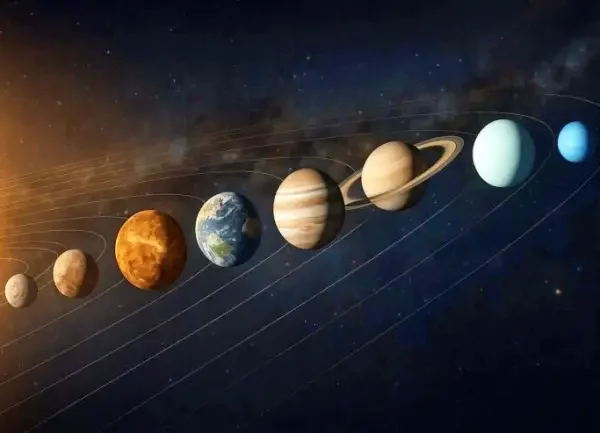Cosmic infinity. When we gaze up at the night sky from a location free of light pollution, the sight can be breathtaking. The velvet blackness is dusted with what seems like an uncountable diamond scattering of brilliant stars.
Among these, some stand out like Sirius, the brightest star in our night sky, located a mere 8.6 light-years away, or the colossal red giant Betelgeuse, a stellar behemoth poised to potentially end its life in a spectacular supernova explosion.
This immediate impression of countless stars leads to a profound question: just how many stars are there in the universe? Can scientists truly pin down an exact number?
The quest to quantify the stars begins not with individual pinpricks of light, but with the galaxies the immense stellar cities that organize the universe.
Cosmic infinity or Galactic Fabric of the Cosmos.
Our understanding of the universe reveals that it is structured by an enormous number of galaxies. Current estimates suggest that the observable universe the part we can see contains anywhere from 200 billion to an astonishing 2 trillion galaxies.
Each galaxy is an entire world unto itself, a swirling collection of stars, planets, dust, and gas, possibly harboring untold forms of life. The scale of these cosmic islands is staggering:
• Spiral galaxies, like our own, can contain hundreds of billions to over a trillion stars.
• Giant elliptical galaxies are even more massive, sometimes housing up to 100 trillion stars.
• Even the smallest dwarf galaxies, while comparatively small, still count their stellar population in the billions.
The Milky Way Galaxy.
Our home galaxy, the Milky Way, is but a small segment of this colossal universal structure. Yet, it is an entity of immense scale. Even this one spiral galaxy is estimated to contain between 100 billion and 400 billion stars.
Among this vast multitude shines our life-giving star, the Sun. Without it, life on Earth as we know it would be impossible. All the other countless luminaries we can only glimpse through powerful telescopes are part of this unimaginably vast, rotating system, all bound by gravity to the galactic center.
Contemplating this scale hundreds of billions of stars in just our single galaxy makes the true immensity of space undeniably clear. Our world, our Solar System, is a tiny speck compared to the surrounding cosmic grandeur.
Tallying the Stars in the Universe.
The process of estimating the total number of stars in the universe involves multiplying the estimated number of galaxies by the average number of stars per galaxy. Given the colossal numbers involved, the final result quickly strains the limits of human comprehension.
Astronomers’ best estimates for the total number of stars in the observable universe hover around a figure known as a septillion a ‘1’ followed by 24 zeros. Total Stars in Observable Universe≈1024
This means the approximate total number of stars in the cosmos is: 1,000,000,000,000,000,000,000,000
This figure is so massive that it is often compared to the number of grains of sand on all the beaches of Earth a humbling and mind boggling scale that underscores the true, bewildering richness of our universe.
The Stars We Can Actually See.
Despite the septillions of stars estimated to exist, the number we can actually see with the naked eye is surprisingly small.
• Without the aid of a telescope, an average person under ideal conditions can only distinguish approximately 5,000 stars across the entire celestial sphere.
• Furthermore, from any single point on Earth, only about half of these are visible at any given time, as the other half are below the horizon.
This means that even on the clearest, darkest night, the maximum number of stars you can personally witness is only around 2,500. Compared to the trillions upon trillions of stars that exist, this is a negligible fraction a mere tip of the cosmic iceberg.
The vast majority of stars remain invisible to us, shining in distant galaxies or obscured by the sheer distance of space.
To look up at the night sky, therefore, is to glimpse a tiny, luminous fragment of an endless and mysterious cosmos, a realization that is both awe-inspiring and slightly terrifying.
The Cosmic Blueprint.
Why Our Solar System Planets are Aligned as They Are.
The stars are only one part of the cosmic tapestry. Closer to home, our Solar System presents a fascinating order: Mercury, Venus, Earth, and Mars near the Sun, followed by the giants Jupiter, Saturn, Uranus, and Neptune.
This precise arrangement is not a cosmic accident but the natural, inevitable result of the physical laws that governed the birth of our stellar neighborhood.
The order and composition of the planets rocky planets near the Sun and gaseous/icy planets farther out can be explained by the Nebular Hypothesis, which details the formation of the Sun and the planetary system.
The Birth of the Solar System.
Billions of years ago, the area that is now our Solar System was nothing more than a chaotic, vast cloud of gas and dust the solar nebula.
1. Gravitational Collapse: Under the force of gravity, this cloud began to collapse and contract.
2. Rotation and Flattening: Due to the conservation of angular momentum, the collapsing cloud began to spin faster and flatten into a vast, rotating protoplanetary disk, similar to a cosmic frisbee.
3. The Sun’s Ignition: The vast majority of the mass collected in the hot, dense center, eventually igniting under thermonuclear fusion to become our star, the Sun.
4. Accretion: The remaining material in the disk began to clump together, or accrete, forming the early building blocks of the planets.
The Temperature Gradient and Planetary Composition.
The crucial factor determining the final order and nature of the planets was the temperature gradient within the protoplanetary disk. The heat from the young Sun was the primary architect of the Solar System’s structure.
The Inner System.
The Rocky Planets.
• Proximity and Heat: Closer to the Sun, the temperatures were searingly hot.
• Volatile Materials Evaporate: This extreme heat prevented light, volatile materials like hydrogen and helium gas, and ice (frozen water, methane, ammonia, etc.) from condensing and remaining in solid form.
• Refractory Materials Remain: Only substances with very high melting points, known as refractory materials (like silicates and metals), could condense into solid grains.
• Result: The inner planets—Mercury, Venus, Earth, and Mars formed from these dense, rocky, and metallic materials. They are relatively small and dense, having been stripped of most of their lighter elements by the intense solar radiation.
The Outer System.
The Gas and Ice Giants.
• Distance and the Frost Line: Further out, beyond what is known as the frost line (or ice line), the temperature was cool enough for volatile compounds, especially water ice, to condense into solid particles.
• Abundant Material: This significantly increased the amount of solid material available.
• Massive Growth: The planetary cores forming in this region rapidly grew massive enough to gravitationally capture vast amounts of the lightweight hydrogen and helium gas that was still abundant in the outer disk.
This process led to the formation of the Gas Giants (Jupiter and Saturn) and the Ice Giants (Uranus and Neptune), which are characterized by their enormous size and primary composition of gas and ice over a small rocky core.
They are the giants of the Solar System because they were able to incorporate the most common elements (hydrogen and helium) into their structure.
The Asteroid Belt.
Jupiter’s Role.
Between the orbits of Mars and Jupiter lies the Asteroid Belt. This region provides a vivid remnant of the early, chaotic phase of planetary formation.
The gravitational influence of the enormous planet Jupiter was so immense that it disrupted the formation of a planet in that specific orbital region. Jupiter’s power stirred up the planetesimals (the building blocks of planets) and prevented them from fully coalescing into a single, large body.
Instead, the material was either scattered, collected by Jupiter itself, or left behind as the collection of smaller, irregularly shaped bodies we now call asteroids.
Thus, the precise sequence of planets rocky, then the asteroid belt, then gaseous/icy is the natural outcome of a cosmic sorting process driven by a gradient of temperature, the composition of matter, and the dominant gravitational forces in the early Solar System.
Each planet’s location is a billion year old receipt of the conditions in the protoplanetary disk at the time of its birth.
Have a Great Day!





